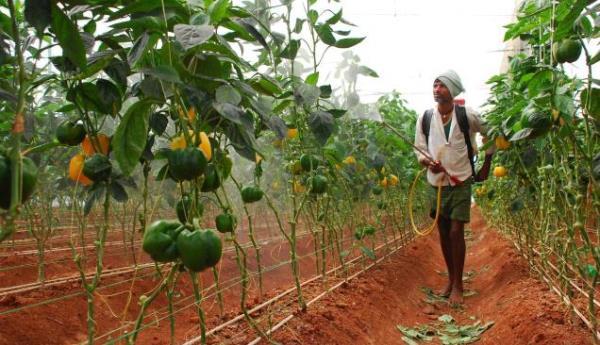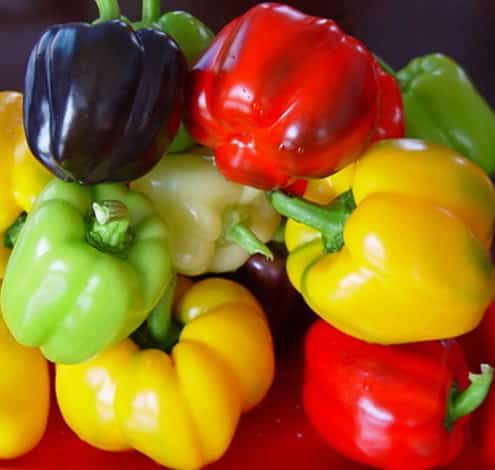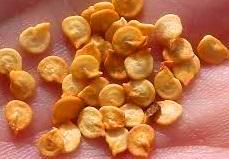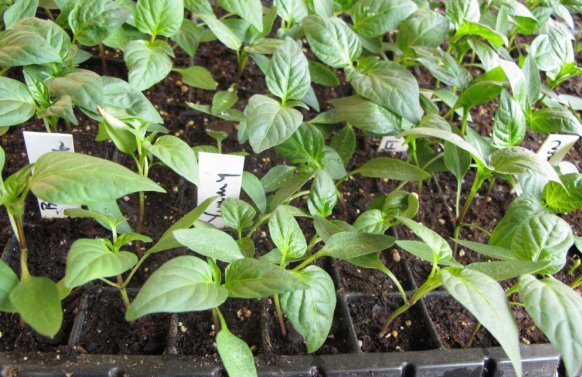Capsicum Cultivation Guide:

Introduction of Capsicum Cultivation:- Capsicum is one of the excellent vegetables and has great demand in the market. In some countries, capsicum is also being called as “Bell Pepper”, “Green Pepper”, and “Sweet Pepper”. The shape and intensity of pungency is different from chilli. Capsicum is like fleshier and of different shapes and colours. Usually, it looks like a bell, hence its being called as bell pepper. All the cultivars (varieties) are very mild in pungency and even some of them are non-pungent. Capsicum plants are bushy and reach about 60-75cm high and semi-perennials that are grown as annuals in commercial cultivation. Capsicum is used in salads, stews, stir-fries, baked and stuffed dishes, salsa, pizzas and cheeses and pickles. Capsicums are also being used for producing paprika which is used for coloring foods, flavoring and in sauces. When it comes to the history of capsicums, they were originated in the Americas, but are now spread worldwide. Capsicum can be grown in controlled and protected environments such as greenhouse, polyhouse and shade nets. Capsicum grown in protected area has more demand due to good quality of produce. Commercial growers can opt for capsicum crop for good profits. The crop management practices of capsicum are similar to chilli crop. Growing coloured capsicum is increasing day by due their attractive colour and to use especially in salads. Capsicum is rich in vitamins such as “A’, ‘C’, minerals and antioxidants. One can expect more yield from polyhouse, greenhouse or shade net when compared to open field cultivation. Capsicums can be grown indoors / back yards, in pots and containers as well.
Scientific Name or Botanical Name of Capsicum:- Capsicum annuum.
Genus of Capsicum:- Capsicum L.
Family Name of Capsicum:- Solanaceae.
Common Names of Capsicum:- Bell pepper, Sweet pepper, and Green Pepper.
Capsicum Names in Other Parts of World:- Paprikaschote (German), Simla Mirch (Urdu), Paprika (Dutch), Barbaroni (Somali), Nерц (Mongolian), Piobar (Scottish), 菜椒 (Chinese), звънец чушка (Bulgarian), Siling pari (Filipino), Ma tes plug (Cambodian), කාපිරි මිරිස් (Sinhalese), ớt chuông (Vietnamese), พริกหยวก (Thai), 피망 (Korean), πιπεριά (Greek), ピーマン (Japanese), Paprika (Latvian), Kapie (Czech), Le poivron (French), Dolma biber (Turkish), Paprika (Swedish), Loceng lada (Malay), Peberfrugt (Danish), 鐘形辣椒 (Taiwanese), Bell paprika (Hungarian), Pimiento (Spanish), भेडेखुर्सानी (Nepali), Peperone (Italian).
Capsicum Names in India:- Capsicum (English), Simla Mirch (Hindi), Kudamilagai (Tamil), Capsicum / Bengulooru Mirapakaya / Simla mirchi (Telugu), Dhobli Mirchi (Marathi), Shimla mirch (Oriya), Kuda mulagu (Malayalam), Donne menasinakaayi (Kannada), Shimla Mirch (Bengali), Simla marcha (Gujarati), Capsicum (Assamese), Simla Mirch (Punjabi).
Health Benefits of Capsicum:- The following are some of the health benefits of capsicum.

- Capsicum has cancer fighting properties.
- Capsicum consumption is good for Eye health.
- Capsicum supports weight loss.
- Capsicum boosts immune system.
- Capsicum is an excellent source of Iron.
- Capsicum supports healthy hair and nail growth.
- Capsicum is good for skin health.
- Capsicum supports cardiovascular health.
- Capsicum has anti-aging properties.
- Capsicum is good for diabetic patients.
- Capsicum relieves from menopausal symptoms.
Cultivars (Varieties) of Capsicum:- Well, there are many varieties of bell pepper with different shapes, colours, and flavours which are grown throughout the world depending the purpose. Commercial growers of capsicum should consider locally improved varieties for high yields. Here are some of typically grown varieties of capsicum.
- Anaheim
- Ancho/ Poblano
- Blocky or Bell
- Cascabel
- Cayenne
- Chiltepins or Small Hots
- Fresno Chili
- Jalapeno
- Ornamental
- Pasilla
- Pimiento
- Serrano
- Waxy.
- Indian Varieties: California Wonder, Arka Gaurav, Arka Basant, Early Giant Chinese Giant, World Beater, Yolo Wonder Bharat, Arka Mohlnl, Bullnose, King of North and Ruby King.

Climate Requirement for Capsicum Cultivation:- As we said before that it is has similar requirements of farm management practices of chilli, capsicum requires similar agro climatic conditions just like chilli. Capsicum crop is very sensitive to frost conditions. The best temperature for capsicum cultivation is 22°C to 25°C. Higher temperature conditions will result in flower/bud/fruit drop and end up with lower yield than expected.
Soil Requirement for Capsicum Cultivation:- Capsicum or sweet pepper or bell pepper can be cultivated in most of the soil types. However, well drained clay loam soil rich in organic matter is best for its growth and yield. Supplementing the soil with good farm yard manure (FMY) in case of sandy loam soil proved the high yields. When you plan to grow the capsicums on large scale or commercial line, it is better to go for soil test to know the soil strength (fertility). Based on soil test results, fill the requirement for nutrient or micro-nutrient deficiency. The most suitable pH range of soil for capsicum cultivation is 6 to 7.0.
Propagation in Capsicum Cultivation:- Usually, Capsicums are propagated through seeds.

Treatment of Seeds in Capsicum Cultivation:- Seed treatment should be carried out to prevent any seed-borne diseases before sowing. Treat the capsicum seeds with Thiram or Captan @ 2 grams/ kg of seed before sowing.
Season for Capsicum Sowing:- It all depends on the method of cultivation. If it is rainfed crop, one should be ready just before monsoon. Capsicum can be grown throughout the year with abundant water facility or in controlled environment like greenhouse, polyhouse or shade net. Generally, in South Asian regions, capsicum crop is sown August for the autumn-winter crop and in November for the spring -summer crop.
Land Preparation in Capsicum Cultivation:- Plough the field till the soil obtains fine tilth stage. Make sure to remove any weeds from previous crops. Supplement well-decomposed farm yard manure (FYM) like cow dung of 20-25 tonnes/ha as basal before last ploughing. Commercial capsicum growers should consider soil test to fulfil any nutrient and micro-nutrient deficiencies.
Planting in Capsicum Cultivation:-
- Seedling Raising: Capsicum seedlings should be first raised in the nursery beds and then transplanted in the main fields. Normally, 5 to 6 seed beds with each size of 300 cm x 6O cm x 15 cm are good enough to cover 1 hectare cultivation. Seeds should be sown in rows at 8 to 10 cm apart to get healthy germination (seedlings). An about 1 to 2 kg seeds are required for sowing in one hectare land depending on the cultivar. The seeding area should be covered with a thin layer of soil manure mixture (may cover the seed with coco peat and keep the trays one above the other and cover with a polythene sheet till germination starts). These beds should be irrigated with sprinkler to maintain optimum moisture for quick germination.

- Transplanting: Generally, 45 to 50 days old seedlings of capsicum with 4 to 5 leaves should be transplanted in the fields. Make sure to irrigate the beds before lifting the seedlings from nursery beds. It is preferred to transplant in rows during cloudy day or evening. Immediate irrigation should be done after transplanting the seedlings in the fields.
- Spacing: The row distance depends on the area, variety and planting method. Generally, they should be transplanted in rows at a distance of 30 cm to 55 cm. Plants spaced at 45 to 50 cm and rows spaced at 90 cm are also fairly common.
Irrigation in Capsicum Cultivation:- Timely and uniform irrigation in any crop results in good quality of produce and high yields. For raising on nursery beds, sprinklers can be used to wet the beds for good germination percentage. After transplanting in the main field, consider drip irrigation for better use of water and fertilizers. The frequency of irrigation depends on plant age, crop stage, and soil type. The first irrigation should be given just after transplanting the seedlings in the main field for better root development. Subsequent irrigation should be provided as and when required. Irrigation is essential in arid and semi-arid regions. There is no need of irrigation in rainy season. However, in general, capsicum requires irrigation at an interval of 7-10 days.
Manures and Fertilizers in Capsicum Cultivation:- Well decomposed farm yard manure of 20 to 25 tonnes should be added as part of land preparation. In-organic fertilizers of N:P:K should be applied in the ratio of 40:60:30 kg/ha as basal application (Potassium and phosphate fertilizers should be mixed in the plant rows just before transplanting). Apply 40 kg of ‘N’ on 30, 60 and 90 days of planting as top dressing.
Weed Control in Capsicum Cultivation:- Weed control is a part of intercultural operation and should be practiced for quality produce and crop yield. These practices are similar to weed control methods in chilli farming. Two weedings 30 and 60 days after transplanting lead to high yield in green pepper. Earthing of plants may also be done after 2 to 3 weeks of transplanting. Earthing operation will also help in removing the weeds.
Pests and Diseases in Capsicum Cultivation:- The following are pests and diseases found in capsicum cultivation.
Pests: Thrips, Aphids, and Mites common pests found in capsicum cultivation.
- Thrips: These pest insects suck the sap from the leaves. This pest can be controlled by the spraying of 0.25% Nicotine sulphate.
- Aphids: These suck the cell sap from the leaves and petioles and cause considerable plant damage. This can be controlled by the application of Dimeton methyl (0.05 to 0.02%).
- Mites: Generally mites are found under the leaves which can suck the sap and cause the considerable loss to the plant. These can be controlled by spraying Dimethoate (Rogar @ 1 ml per litre).
Diseases: Damping off, Powdery mildew, Anthracnose, Bacterial wilt and Leaf curl disease are common diseases found in capsicum cultivation.
- Damping off: This is a fungal disease and can happen nursery beds before the seedling emerges from the soil which can kill the seedlings and may cause seed rot. This can be prevented or controlled by providing good drainage beds and sterilizing the soil by burning trash in the surface. The capsicum seedlings may be protected by spraying with 0.5 to 1.0 % Bordeaux mixture.
- Powdery mildew: This disease is mostly found during summer months. This disease cause the plant leaves to white powder spots. This can be controlled by removing effective leaves and spraying wettable sulphur @ 2 grams /liter water.
- Anthracnose: This is a fungal disease and attacks foliage, stem and fruits. The infected fruits develop as dark spots and drop off permanently. This disease can be controlled by seed treatment with Thiram (0.2%) before sowing on the beds.
- Leaf curl disease: This is a viral disease and can cause the symptoms of curling of leaves accompanied by thickening mid swelling of leaves. Thrips and aphid are the culprits for transmitting this disease. This can be controlled by reducing vector population and in the beginning, infected plants should be uprooted.
- Bacterial wilt: This disease affects leaves and fruits of capsicum. The leaves become flaccid and dry. This can be controlled by applying bleaching powder before transplanting @ 14-15 kg/ha.
Note: Your local horticulture department is good source for finding suitable solutions for controlling pests and diseases in capsicum cultivation.
Harvesting in Capsicum Cultivation:- Harvest of capsicum depends on variety and the method of cultivation. Pick fully matured green fruits before ripening. Green capsicums will be ready for harvest is relatively firm and crisp. Capsicum fruits can be picked with an upward twist which leaves a piece of stem attached with the fruits.
Yield in Capsicum Cultivation:- Well, yield of any crop depends on many factors like farm management practices, cultivar (variety), irrigation, propagation method and agro-climatic conditions. On an average, one can expect 12 to 15 tonnes per hectare of quality fruits. More crop yield can be obtained, if capsicums are grown in greenhouse or polyhouse or under shade net.
Marketing of Capsicum:- Fresh produce can be transported in small trucks to local markets.

I want to.make commercial farming of this